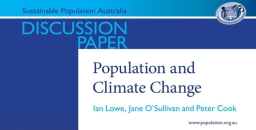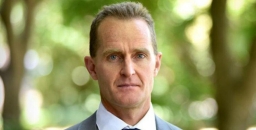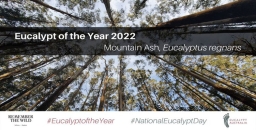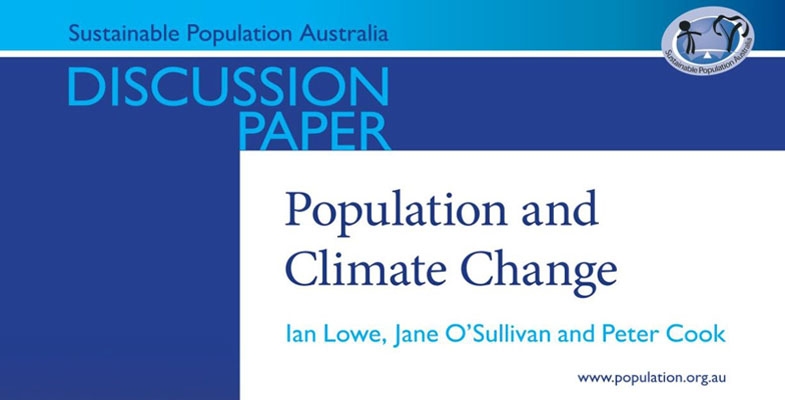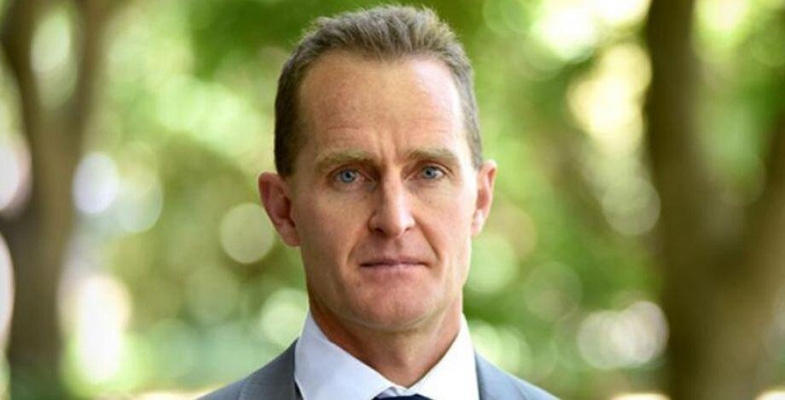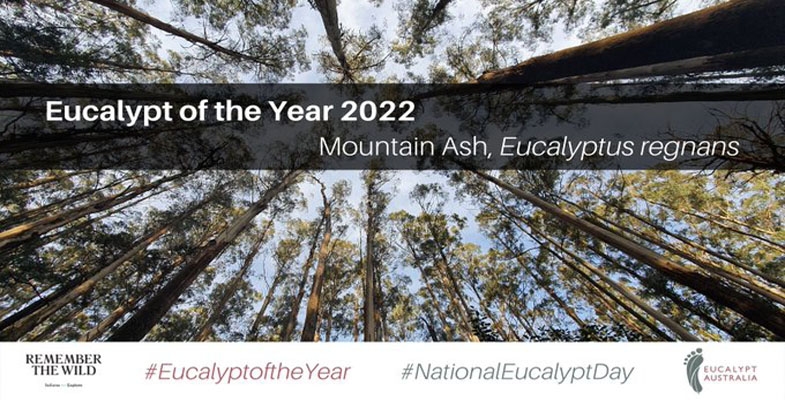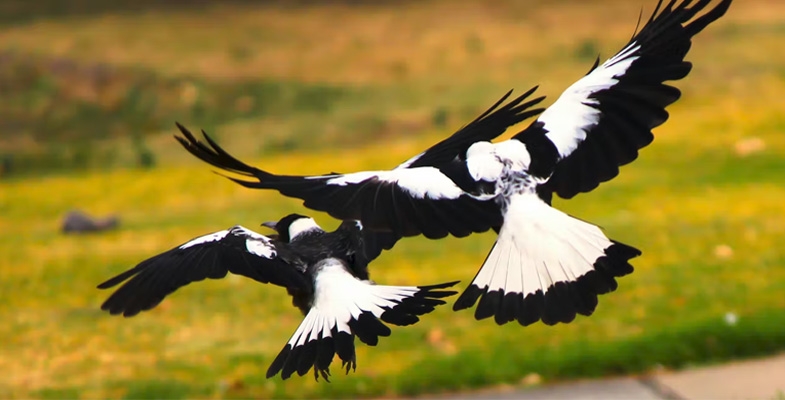STEP Matters 215
- Default
- Title
- Date
- Random
-
The NSW and Australian governments still want a rapid increase in population This will place great pressure on new outer…Read More
-
This important discussion paper on population and climate change by Ian Lowe, Jane O’Sullivan and Peter Cook was published in…Read More
-
The EPA released the three-yearly State of the Environment Report (SoE) in February. There are some pluses but mostly it…Read More
-
The Emissions Reduction Fund (ERF) is a voluntary scheme, administered by the Australian government’s Clean Energy Regulator. It aims to…Read More
-
Eucalypt Australia holds a competition every year asking people to vote for their favourite out of a short list of…Read More
-
There are nearly 20,000 introduced plant species in Australia – roughly the same number as our native species – and while some…Read More
-
When we attached tiny, backpack-like tracking devices to five Australian magpies for a pilot study, we didn’t expect to discover…Read More
-
Richard Flanagan provides a depressing description of the Tasmanian salmon farming industry in 189 pages. This review looks at environmental…Read More
NSW Planning Minister trashes plans to improve liveability
The NSW and Australian governments still want a rapid increase in population This will place great pressure on new outer suburbs and areas near public transport that have been earmarked to accommodate the demand for new housing.
There was optimism that a directive issued by former Planning Minister, Rob Stokes of planning principles would have made new suburbs more pleasant places to live. They might have had more parks and street trees that would reduce the ambient heat and buildings designed with sustainability principles. They would help NSW meet the ambition of net zero by 2050 considering that buildings account for 25% of emissions.
The principles also provided that resilience and risk management from climate change be key considerations so that development in floodplains or close to bushland would be controlled. These principles would be applied throughout all NSW cities and towns. Recent events have demonstrated their importance.
The details for the implementation of the principles are set out in a draft Design and Place State Environment Planning Policy (SEPP). It has been developed by the Department of Planning in collaboration with architects, planning experts and researchers.
In a shock announcement, the new NSW Planning Minister, Anthony Roberts, has decided to bow to the developer lobby and revoke the principles and the Design and Place SEPP. What happens now is unclear.
Increase in density
The draft policy was not all good. It included an Urban Design Guide that established objectives for quality urban spaces. It was intended to advise applicants and their design teams, who prepare development proposals, on expectations and to assist in assessment of proposals (by local or state government).
There is a sting in the tail of the list of objectives. They include a blanket increase in density to 30 dwellings per hectare in areas within 5 min walk to local shops or near to public transport and 15 dwellings per hectare everywhere else. The latter equates to 666 m2 average area per dwelling including space for roads, parking, parks etc. Implementation can occur by mixing apartment buildings into low density areas.
The reasoning stated in the guide is the creation of more vibrant urban areas. That seems highly unlikely. Current LEPs would be ignored. Character and heritage would be lost in the process if the developments that have sprung up all over Sydney are anything to go by.
Push for spot rezonings
In another backward move the government has issued a discussion paper about a proposal to allow developers to request spot rezonings. Councils would have a limited time to assess these applications.
The authority of councils and community wishes determined by strategic plans would be overtaken by developers making these requests. This goes against the objective that ensures strategic planning is the foundation for all decisions about potential land-use changes. The pressure to assess applications within a fixed time frame will compromise the ability of councils to assess how a proposal fits into the area’s strategic framework and take into account other developments in the process of construction or under assessment.
The planning system is more flawed than ever. More details of these changes are described in FOKE’s March 2022 newsletter.
Population and climate change
This important discussion paper on population and climate change by Ian Lowe, Jane O’Sullivan and Peter Cook was published in February 2022 by Sustainable Population Australia. Here is their summary.
The relationship between population and climate change is complex. At a basic level, for a given lifestyle (consumption pattern), emissions of the greenhouse gases that cause climate change are directly proportional to the size of the population. For example, if Australia’s recent population growth rate of about 1.5% per year were to continue, in less than 50 years we would double our demands for energy, food, water and all natural resources. All else being equal, we would double our carbon footprint also. On the other hand, in a hypothetical world where we achieve lifestyles entirely free from greenhouse gas generation, how many of us there were would make no difference to the climate. But even if this were achievable, which is questionable, we could decarbonise our lifestyles more rapidly if population growth was not constantly adding to the demand for energy and resources. Hence, the rate of population growth will make a considerable difference to the cumulative emissions generated during the transition. Furthermore, population growth greatly increases our vulnerability to the impacts of climate change.
The population issue has had a controversial history which has led to the development of a ‘taboo’ against talking about population as a policy-relevant factor. This paper calls for a new level of maturity in discussing the population issue. It should no longer be acceptable for unfounded accusations of racism to be used to silence respectful and thoughtful discussions about population growth. It should no longer be acceptable – at an epochal moment of existential risk for human civilisation – for climate policy prescriptions to conspicuously exclude population-related actions in the face of abundant evidence (as reported in this paper) that such measures are feasible, effective and consistent with human rights and democratic values. Ending global population growth more swiftly and at a lower peak is a necessary but not sufficient condition for overcoming the climate crisis.
Population and consumption work together
The Intergovernmental Panel on Climate Change (IPCC) says:
Globally, economic and population growth continue to be the most important drivers of increases in CO2 emissions from fossil fuel combustion.
But these are not independent contributors to emissions; they multiply each other. Most emissions are attributable to the richest billion people, but their economic growth since 1970 has not increased their average emissions per person. The growth in emissions has come from lifting multitudes of poor people to a modest middle-class lifestyle in places like China and India.
It is futile to ‘blame’ past emissions on either population or consumption patterns when they are the product of both. What should be of more interest to us is the extent to which the future challenges of climate change, including emissions reduction and adaptation, can be lessened by giving due attention to population growth. This paper argues that our climate change response can’t afford to ignore the potential to minimise further population growth.
Slow-response actions are no less urgent
Nobody expects addressing population growth alone to solve climate change. There is no intention to deflect attention from high- emissions consumption patterns, nor to blame the poor for the excesses of the rich. Demographic inertia means that even concerted efforts to slow population growth are unlikely to have significant impact on the timescale demanded by the climate crisis. Measures to decarbonise our energy system and reverse the loss of vegetation and biodiversity are needed urgently in this decade, if we are to avoid catastrophic impacts of climate change. Measures to reduce childbirth will take decades to make an appreciable difference to greenhouse gas emissions and human demands on nature.
Nevertheless, how well we do in the second half of this century will depend more on what we do about population growth this decade than on any actions that will remain available to us in 2050. If the successful efforts to promote voluntary family planning adoption in the 1970s and ’80s had not been abandoned in the 1990s, the global population might now be on track to peak below 9 billion. Because of decisions made in the 1990s, we’re heading for 11 billion or more. But if we renew family planning efforts now, a peak below 10 billion is possible and we could end this century with fewer than 8 billion people. If we wait until 2050, 11+ billion would be locked in.
A slow fruition does not make population action any less urgent. As the proverb says, ‘The best time to plant a tree is 20 years ago. The second-best time is now.’ So it is with addressing global population. The climate crisis is largely a product of the short- sightedness of political responses decades ago. Those who say that reducing birth rates is too slow to be relevant to the climate change response are suffering the same short-sightedness that created the problem they seek to fix.
In rich countries, fewer people means lower emissions and fewer vulnerabilities
Any increase of population in the more affluent countries will add to those countries’ use of resources and their greenhouse gas emissions. In a rich country, having fewer children does more to slow climate change than any of the other actions often advocated, such as eating less meat, avoiding air travel or using only renewable energy. If immigration is high enough to cause population growth, it also increases a country’s emissions, but some people argue that it makes no difference globally. This is untrue: the average migrant to Australia increases their carbon footprint fourfold by adopting Australian lifestyles. While Australians have recently reduced their per capita emissions a little, Australia’s total emissions from energy have risen 49% since 1990 due entirely to population growth of 8.3 million people.
Australia is not only one of the world’s largest per capita emitters of greenhouse gases, it is also among the countries likely to be most affected, in terms of negative impacts on agriculture, water supply, bushfire threat and extreme weather events. All these threats are intensified by the threat-multiplier of population growth.
The current Australian government policy of encouraging high levels of migration could see the 2060 population approaching 40 million and continuing to grow rapidly. That scale of increase would significantly magnify the task of producing enough clean energy to meet our material needs within a responsible carbon budget. Australian agriculture is unlikely to feed that number during increasingly frequent and severe droughts, and water security will depend on costly and energy-intensive desalination or recycling. These serious vulnerabilities are entirely avoidable if we choose population stabilisation.
In poor countries, smaller families are essential for adaptation
Population growth heightens vulnerability to climate change to a much greater extent in poor, high-fertility countries. For most of these countries, population growth itself is a greater threat to security and wellbeing than climate change is. Saying this does not in any way diminish the serious impacts of climate change. However, if a projected 11–25% reduction in crop yields this century due to climate change is considered a crisis, it is absurd to claim, as many people do, that population growth in high-fertility countries is not important when it will diminish the available water and agricultural land per person by a factor of three or more, while ensuring high levels of unemployment and poor infrastructure provision. While family size should be considered part of emissions reduction efforts in rich countries, it should be integral to adaptation efforts in poor countries. Nevertheless, the emissions caused by growing numbers of the poor are not insignificant. Deforestation is particularly vulnerable to population pressure.
Currently, family planning services are badly underfunded, denying many women access to safe and reliable contraception. As a result, the fall in birth rates has been much slower than was anticipated a generation ago, unemployment is rampant and hunger is once more on the rise.
Many of the beneficial impacts of lower birth rates are enjoyed much more rapidly than their effect on carbon emissions. These benefits include greater autonomy of women, health of infants, food security of families, protection of biodiversity, employment prospects for youth and economic development of nations. If climate adaptation is dominating the agenda for international aid, it makes sense that family planning should be included as an adaptation measure.
Climate change will affect world population
The other side of the coin is the impact climate change is projected to have on population, through greater loss of life. The frequency of extreme heat events, floods and crop-destroying droughts is projected to increase substantially. Some Pacific islands and low-lying coastal areas will become uninhabitable, causing either loss of life or relocation of whole populations. Mass migrations could possibly in turn lead to conflict between the displaced people and those whose traditional lands they enter. However, responses to climate change can have some beneficial health impacts. Urban air pollution and indoor smoke exposure are both major causes of premature deaths, and might be substantially reduced by electrification of energy systems. It is difficult to anticipate the net effect on population trends.
Only low-population scenarios can keep warming below 2°C
The most compelling reason to include population in the climate change response is that climate mitigation models are only able to achieve sufficient emissions reduction if their scenarios assume a rapid peak and decline in global population. These assumptions are not readily visible: they are hidden under the labelling of scenarios such as ‘SSP1’ or ‘SSP2’. Without making these assumptions explicit, and discussing the actions that could help achieve the required birth reductions in a way that elevates people’s rights and freedoms, these scenarios can’t become reality.
Addressing population growth alone can’t solve climate change, but not addressing it will ensure we fail.
NSW State of the Environment report – a mixed result
The EPA released the three-yearly State of the Environment Report (SoE) in February. There are some pluses but mostly it paints a sorry picture. It boils down to the human impact from climate change and population growth.
The Australian SoE was sent to the Minister for the Environment, Susan Ley, in December. But it is has not been made public yet. The minister is required to table the report in parliament within 15 sitting days of receiving it. Parliament has sat only briefly this year so the government is not legally required to release it until the next parliament forms. What is she trying to hide?
For a change the NSW report does acknowledge the significance of population growth ‘population growth is the main driver of environmental issues’.
Yet, the NSW government’s top bureaucrats have urged the premier, Dominic Perrottet, to take a national leadership position and advocate a temporary five-year doubling of the pre-pandemic migration rate, which would increase the NSW population by about 2 million in 5 years. The argument is that this would rebuild the economy and address labour shortages.
The economy seems to be doing all right, thank you! Labour shortages seem to be a perpetual issue despite high immigration for most of this century. Perhaps it is more to do with wages being too low in the affected sectors of the economy. In 2018, Gladys Berejiklian, called for a pause to enable the state’s infrastructure to catch up. This still hasn’t happened.
Some pluses in this SoE report include:
- Air and urban water quality are generally good but the state’s major inland river systems continue to be affected by water extraction, altered river flows, loss of connectivity and catchment changes such as altered land use and vegetation clearing.
- Greenhouse gases are declining having fallen by 17% since 2005. Renewable energy sources have grown but they are still only 19% of electricity power in 2020. But, unlike the federal government, there is actually a plan to get to net zero by 2050.
- About 9.6% of NSW is conserved in the public reserve system. The rate of new reservations has increased markedly, with around 305,000 ha being added to reserves since 2018.
What about biodiversity?
The story on biodiversity is very different. Much loss can be attributed to the Black Summer bushfires but the downward trend has accelerated due to climate change and land clearing.
Improvements have been made through the Saving our Species program. $175 million has been allocated to the program for the 10 years to 2026, and $240 million has been allocated over five years to support a greater commitment to long-term conservation of biodiversity on private land.
Land clearing is the greatest threat to biodiversity. Land clearing and logging of native forests continue at record levels (54,500 hectares in 2019). Unrealistic logging contracts are driving the rates of tree felling which is crazy when several reports have shown that the government is losing money on logging operations. Land clearing is now so bad that in February the koala was declared an endangered species under the Commonwealth EPBC Act.
Money is going into saving species but the amount of land clearing is likely to be creating more threatened species. Invasive species are also a major threat. The regulatory framework under the Biodiversity Conservation Act is failing as was predicted by environment groups and the EDO.
Is the Emissions Reduction Fund meeting its objectives?
The Emissions Reduction Fund (ERF) is a voluntary scheme, administered by the Australian government’s Clean Energy Regulator. It aims to provide options or incentives for a range of organisations and individuals to adopt schemes to reduce their emissions. These schemes can earn Australian carbon credit units (ACCUs) for emissions reductions. One ACCU is earned for each tonne of carbon dioxide equivalent (tCO2-e) stored or avoided by a project. ACCUs can be sold to generate income to the government through a carbon abatement contract.
The market was extended recently when the government changed the rules so that holders of ACCUs may sell them in the secondary market. Strong demand has increased their value markedly. The government no longer needs to pay for these ACCUs. The 2022 budget reveals that the commitment has reduced by $2 billion.
There is a plethora of potential emission reduction projects (currently 38) supported by the scheme such as upgrading building lighting to LEDs, landfill gas capture, sequestration through growing trees or soil carbon improvement. The government’s website shows how very complicated the scheme is. Each type of project has supporting documents outlining the ACCU calculation methods and reporting requirements. ACCUs are not earned up front.
Successive government budgets since 2014 have included allocations to the ERF that now totals $4.4 billion. Payments are made as the emission reduction is deemed to have been achieved in accordance with the contract that has a fixed time frame of 5 to 10 years depending on the type of project. For a project based on growing trees the ACCUs accrue over 15 years but the forest has to be maintained for 25 or 100 years. The calculation of carbon stored includes a big range of adjustment factors that are too detailed to go into here.
Standards for effective offsets
STEP Matters 188 reported on the standards that the scheme needs to follow in order to actually achieve carbon emission reductions:
- additionality – the scheme should only identify new emission reduction projects, not ones that would have occurred anyway
- permanence – this is an issue with forestry projects where the carbon stored may be lost through fire or disease
- accountability – it is reasonably easy to measure the emission reductions and administer the project
Increasing reliance on offsets
The current government’s plan for net zero by 2050 claims that emissions can be reduced by 10 to 20% of 2005 levels using permanent offsets such as storing carbon in soils and vegetation and projects in Asian-Pacific neighbours. The overseas projects would come under the United Nations Clean Development Mechanism that is part of the Kyoto Protocol.
However there is already an increasing demand for offsets:
- Large emitters are required to keep their emissions below defined levels under the Safety Mechanism. They need to buy ACCUs if their emissions are too difficult or expensive to prevent by other means.
- Other companies have sustainability objectives to reduce emissions but some of these are being met by buying offsets.
- Banks are also requiring the big polluters to effectively have offsets as insurance against future carbon liabilities before operations can be refinanced.
Apart from the ERF there are many private carbon offset providers such as Greenfleet – they sell carbon credits to companies or individuals. They are matched with tree planting to offset a company’s emissions or from one-off events such as aeroplane flights.
Question marks about the integrity of some of the fund’s projects
There has been much media publicity recently questioning the integrity of some aspects of the ERF. It is contended that billions of taxpayer dollars are being wasted on projects that are not actually achieving meaningful emission reductions.
The details of the shortcomings of the scheme have been exposed by Professor Andrew Macintosh. From 2013 to 2020 he was chair of the Emissions Reduction Assurance Committee that was set up to advise on the integrity standards for the ERF. He was principal author of the review into the scheme in 2019. The review discovered loopholes in the standards. The government has resisted fixing the problems.
There are three main schemes where the accounting for emissions is of concern.
- Avoided deforestation
Landowners of large areas of western NSW were granted rights to clear their land prior to 2010 but many of the permits have not been acted upon. Now it is actually more lucrative for them to allow the trees to continue to grow instead of the implied intended use of growing crops or grazing because they will be entitled to receive payments for ‘avoided deforestation’. The argument about the legitimacy of this scheme is that the land was never going to be cleared based on historical data of actual clearing rates. This scheme makes up 20% of accrued liabilities. - ‘Human induced regeneration’ or planting of forests on land previously used for cropping or grazing
It is claimed that many of these projects are in areas like western NSW where a permanent forest will not be possible because of low rainfall. The ultimate forest growth level achieved has to be 20% canopy cover and a height of at least 2 m. The Emissions Reduction Assurance Committee considered that much of the land to which the scheme was being applied was not suitable for this expected growth to occur. - Operating electricity generators that harvest methane from landfill sites
These projects would have been implemented anyway because they are financially profitable. Some were operating before the ERF was established.
Advice to the government from the integrity committee was that these projects should not receive any more carbon credits. The response from Minister Angus Taylor was to allow them to get another five years’ worth of credits.
2022 Budget
The Coalition government’s mantra for addressing climate change is with technology not taxes but it is failing to support technology in a meaningful way. It is still fixated with the use of fossil fuels. The effective solution to climate change is to invest in roll out of renewable energy sources and storage. Instead, the Coalition government is increasing funding towards gas production with the idea that unproven carbon capture and storage (CCS) will help reduce emissions. Much of this gas is intended to support the production of hydrogen for export to our Asian neighbours.
There have been more announcements of funding ($1.3 billion) for CCS technology that, in theory, will be used to produce low-emissions steel and hydrogen fuel. Australia’s only operating CCS project at the Gorgon gas field of WA has been a failure so far. If successful, CCS may reduce emissions but it uses a lot of energy in the process and is expensive. Many other countries are advancing hydrogen production technologies. It may become a very competitive market.
The budget papers have revealed the impact of a decision by the Energy and Emissions Reduction Minister, Angus Taylor, to allow holder of ACCUs to sell their entitlements to payments from the ERF on to the more lucrative private voluntary market. This will contribute to a $2 billion improvement in the budget bottom line over the next four years.
The Budget estimates $5 billion will be needed over the next two years for support measures for flood affected communities, as well as clean up, mental health and temporary accommodation measures. This will be funded equally by the federal and state governments. The cost of extreme weather events over the past two years have demonstrated that we need to plan for adaptation and well as reducing emissions. There is still no concrete plan and funding from the government.
Offsets are not a panacea for reaching net zero by 2050
Carbon offsets can provide false assurance that we need not change the way we live but the demand will ultimately be impossible to meet.
A report by Oxfam, Tightening the Net, published in August 2021, provides a global perspective on the unrealistic expectations of companies and countries for carbon offsets to solve their net zero ambitions.
One-fifth of the world’s 2,000 largest publicly-listed corporations now have ‘net-zero’ goals that are dependent upon land-based carbon sinks.
There is simply not enough land on Earth to soak up corporate greenhouse gas emissions. Oxfam estimates that the land required to meet carbon removal plans by businesses could amount to five times the size of India – more than the entire area of farmland on the planet. And much of it rightfully belongs to indigenous and other local people, who in many cases have not given their consent. This process has a name: carbon colonialism.
Eucalypt of the year
Eucalypt Australia holds a competition every year asking people to vote for their favourite out of a short list of selected species. And this year the winner is … the Mountain Ash, E. regnans, the tallest flowering plant in the world.
It grows as tall open forests in high rainfall areas of southern Victoria and north-eastern and southern Tasmania. These Mountain Ash forests are important homes to threatened species like the Leadbeaters (Fairy) Possum and Greater Glider.
The tallest regnans lives in Tasmania’s Huon Valley. Named Centurion, it towers at 100.5 m high. Another notable tree, named Gandalf’s Staff, could be 500 years old and is found in the Styx Valley.
E. regnans is one of an estimated 80 species of eucalypt that are killed by fire, and can only regenerate from seed. They take at least 20 years to mature and produce seed. The increasing fire frequency and severity is threatening their survival.
Second place went to the splendid and widely beloved Red Flowering Gum, Corymbia ficifolia. Its restricted endemic range is in southwestern WA but it now commonplace along streets and in gardens across southern Australia in a hybridised form.
Rounding out the top three is the statuesque Sydney Red Gum, Angophora costata. Also known as the Smooth-barked Apple, this species has been in the top three eucs almost every year since the competition started in 2018!
Eucalypt Australia is the operating name of a Trust, established in 2007 following a bequest from Bjarne Klaus Dahl.
Norwegian-born Bjarne Klaus Dahl spent his working life among the eucalypt forests of Victoria. He developed an affinity with the Australian bush and a high regard for the silvertop ash, E. sieberi.
Bjarne Dahl linked his well-being and financial prosperity to eucalypts, so much so that he left his entire estate to the Forests Commission of Victoria. The Trust’s objectives are the establishment, promotion, cultivation and conservation of eucalypts, and education of the public about them.
Macquarie Uni initiative to reduce risk of invasive garden escapees
There are nearly 20,000 introduced plant species in Australia – roughly the same number as our native species – and while some were brought in for horticultural purposes, the vast majority were introduced as ornamental garden plants. Some of these have become problem invaders.
One such plant is lantana that was introduced as an ornamental species in the mid-1800s and has since spread across 4 million hectares. Birds spread its seeds, helping lantana invade native forests from their disturbed edges and forming dense thickets that dominate ecosystems. It costs graziers more than $100 million pa in lost production.
Another serious problem is privet, originally from Asia, which was enthusiastically adopted by the English as a hedging plant. It is too cold for them to fruit in the UK. They produce masses of fruit here that are widely dispersed into native bushland across the east coast by birds.
Thousands of seemingly harmless species we currently buy from nurseries, chain stores and markets, could also damage nearby ecosystems if they escape our gardens.
Garden Responsibly
Macquarie University’s School of Natural Sciences has recently launched another initiative in their program for Smart Green Cities. The program is called Garden Responsibly. The full website will be launched in September 2022.
The team that developed the website is led by Distinguished Professor, Michelle Leishman, a former president of STEP.
The data underlying the program comes from the Plant Sure scheme, a collaborative project between the Nursery and Gardening Industry Association of NSW and ACT, the Australian Institute of Horticulture and the NSW government. The scheme is designed primarily for use by industry specialists and checks international species databases to flag plants known to be invasive in other countries.
Plant Sure will help gardeners and plant sellers choose ornamental garden plants that will reduce the risk of future weed invasions. Gardening businesses that are certified under the Plant Sure scheme will receive stickers to identify and promote plants as 'gardening responsibly' participants.
Smart Green Cities
The Smart Green Cities program is a collaborative hub connecting industry, government, researchers and community to create liveable urban environments by inspiring change through evidence-based problem solving.
There are now many projects being undertaken investigating ways of making our cities more liveable in the face of climate change.
Altruism in birds? Magpies have outwitted scientists by helping each other remove tracking devices
When we attached tiny, backpack-like tracking devices to five Australian magpies for a pilot study, we didn’t expect to discover an entirely new social behaviour rarely seen in birds.
Our goal was to learn more about the movement and social dynamics of these highly intelligent birds, and to test these new, durable and reusable devices. Instead, the birds outsmarted us.
As our new research paper explains, the magpies began showing evidence of cooperative “rescue” behaviour to help each other remove the tracker.
While we’re familiar with magpies being intelligent and social creatures, this was the first instance we knew of that showed this type of seemingly altruistic behaviour: helping another member of the group without getting an immediate, tangible reward.
Testing exciting new devices
As academic scientists, we’re accustomed to experiments going awry in one way or another. Expired substances, failing equipment, contaminated samples, an unplanned power outage – these can all set back months (or even years) of carefully planned research.
For those of us who study animals, and especially behaviour, unpredictability is part of the job description. This is the reason we often require pilot studies.
Our pilot study was one of the first of its kind – most trackers are too big to fit on medium to small birds, and those that do tend to have very limited capacity for data storage or battery life. They also tend to be single-use only.
A novel aspect of our research was the design of the harness that held the tracker. We devised a method that didn’t require birds to be caught again to download precious data or reuse the small devices.

We trained a group of local magpies to come to an outdoor, ground feeding “station” that could either wirelessly charge the battery of the tracker, download data, or release the tracker and harness by using a magnet.
The harness was tough, with only one weak point where the magnet could function. To remove the harness, one needed that magnet, or some really good scissors. We were excited by the design, as it opened up many possibilities for efficiency and enabled a lot of data to be collected.
We wanted to see if the new design would work as planned, and discover what kind of data we could gather. How far did magpies go? Did they have patterns or schedules throughout the day in terms of movement, and socialising? How did age, sex or dominance rank affect their activities?
All this could be uncovered using the tiny trackers – weighing less than one gram – we successfully fitted five of the magpies with. All we had to do was wait, and watch, and then lure the birds back to the station to gather the valuable data.

It was not to be
Many animals that live in societies cooperate with one another to ensure the health, safety and survival of the group. In fact, cognitive ability and social cooperation has been found to correlate. Animals living in larger groups tend to have an increased capacity for problem solving, such as hyenas, spotted wrasse, and house sparrows.
Australian magpies are no exception. As a generalist species that excels in problem solving, it has adapted well to the extreme changes to their habitat from humans.
Australian magpies generally live in social groups of between two and 12 individuals, cooperatively occupying and defending their territory through song choruses and aggressive behaviours (such as swooping). These birds also breed cooperatively, with older siblings helping to raise young.
During our pilot study, we found out how quickly magpies team up to solve a group problem. Within ten minutes of fitting the final tracker, we witnessed an adult female without a tracker working with her bill to try and remove the harness off of a younger bird.
Within hours, most of the other trackers had been removed. By day 3, even the dominant male of the group had its tracker successfully dismantled.
We don’t know if it was the same individual helping each other or if they shared duties, but we had never read about any other bird cooperating in this way to remove tracking devices.
The birds needed to problem solve, possibly testing at pulling and snipping at different sections of the harness with their bill. They also needed to willingly help other individuals, and accept help.

The only other similar example of this type of behaviour we could find in the literature was that of Seychelles warblers helping release others in their social group from sticky Pisonia seed clusters. This is a very rare behaviour termed 'rescuing'.
Saving magpies
So far, most bird species that have been tracked haven’t necessarily been very social or considered to be cognitive problem solvers, such as waterfowl and raptors. We never considered the magpies may perceive the tracker as some kind of parasite that requires removal.
Tracking magpies is crucial for conservation efforts, as these birds are vulnerable to the increasing frequency and intensity of heatwaves under climate change.
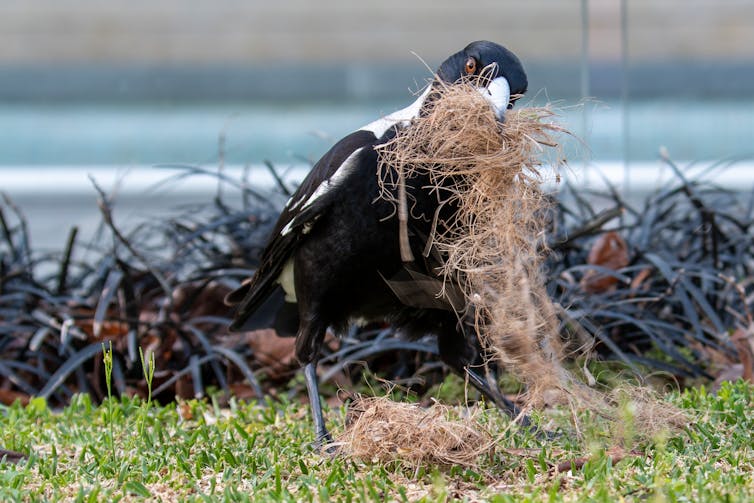
In a study published this week, Perth researchers showed the survival rate of magpie chicks in heatwaves can be as low as 10%.
Importantly, they also found that higher temperatures resulted in lower cognitive performance for tasks such as foraging. This might mean cooperative behaviours become even more important in a continuously warming climate.
Just like magpies, we scientists are always learning to problem solve. Now we need to go back to the drawing board to find ways of collecting more vital behavioural data to help magpies survive in a changing world. ![]()
Dominique Potvin, Senior Lecturer in Animal Ecology, University of the Sunshine Coast
This article is republished from The Conversation under a Creative Commons license. Read the original article.
Toxic: The rotting underbelly of the Tasmanian salmon industry
Richard Flanagan provides a depressing description of the Tasmanian salmon farming industry in 189 pages.
This review looks at environmental problems associated with salmon farming but the author delves into regulatory capture, unbelievable cooperation of the Tasmanian government with salmon farmers, bullying and intimidation, and the ineffectiveness of residents’ complaints. He has done a fine job of alerting us to the unseen, loosely regulated salmon ‘farming’ industry currently degrading Tasmanian waters.
Despite there being no index, table of contents, chapter headings nor map, there are 270 mercifully consecutive references.
Flanagan has publicised his findings on radio, TV and in print; maybe you have heard his arguments.
After you read Toxic I believe you will not purchase Tasmanian farmed Atlantic salmon.
The beginnings
In 1985 the Robin Gray government established Saltas (Salmon Enterprises of Tasmania) with the government as majority owner. Norwegian advisors noted that, apart from one or two experimental pens, the D’Entrecasteaux Channel was too shallow and its flow too weak to disperse the tonnes of sludge produced.
By 2005 Tassal had the ear of the minister and the regulators were captured. More and more salmon farming operations have been permitted with the latest in 2018.
In 2002 from his home on the west side of North Bruny Island, Flanagan detected a small salmon farm. He has seen the gradual degrading of the D’Entrecasteaux Channel. Impacts have been:
- a decline in fish, abalone and other species
- green algal blooms that threaten internationally significant seagrass beds
- TasWater has had to upgrade water filtration systems
- increased risk that algal blooms that cause hypoxia could draw toxic heavy metals into the marine ecosystem
Location of salmon farms

Environmental harm from feed production
Tassal has said that 1.73 kg of wild fish are needed to produce 1 kg of salmon; one-quarter of wild fish caught are estimated to feed farmed fish. Wild fish are reduced to fishmeal in order to feed farmed fish!
Most of the high-protein plant material in salmon feed is grown in Australia, but not soy. Soy cultivation is driving deforestation in the Amazon and in the Cerrado in Brazil.
Harm to humans
The argument that we must farm salmon in order to feed the hungry world falters if you remember that when whole grains fit for humans are fed to animals, and then animal parts fed to fish, less than 10% of the energy in the grains may be converted into edible protein. Never mind questionable health effects of consuming antibiotics fed to fish, nor synthetic astaxanthin, derived from petrochemicals, used to pinken salmon flesh.
Cruelty to animals
Fish farms are in reality gigantic floating feedlots. Chapter 4 details the cruelty involved – majestic creatures reduced to circling in crowded cages of poo and ammonia.
Tasmania’s fur seals like to eat salmon. The salmon industry seeks to get rid of this protected species, by trapping or firing ‘beanbags’ full of lead pellets at them or releasing loud noise bombs.
Pollution and jellyfish
Flanagan correlates the transformation from a diverse healthy ecosystem to the polluted, sick monoculture left by fish farms with a proliferation of jellyfish. Jellyfish kill native fish species and harm oysters, mussels, scallop, clam, sponges and polyps.
Plastic pollution
Salmon pens are made of rigid plastic pipe scaffolding, netting, pulleys, stanchions, handrails, walkways; and kilometres of nylon rope. This loose plastic is difficult to see, floating on the surface where it causes collisions with boats. Plastic pollution litters once-pristine beaches and coastlines.
Toxic: The rotting underbelly of the Tasmanian salmon industry by Richard Flanagan, Penguin books
Reviewed by Margery Street


